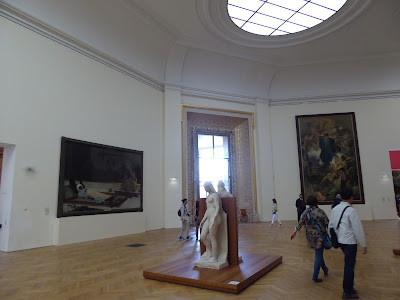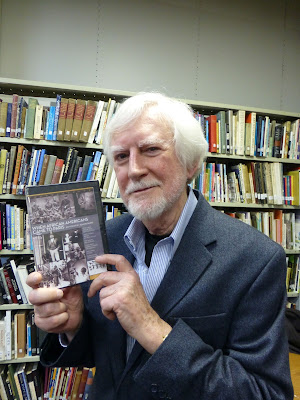Black Expats in Paris is a hugely popular Meetup group that was founded in February 2013 as a means of connecting expatriates of African descent. It is the brainchild of Chicagoan Keenya Hofmaier, a mixed-race woman of German and African-American ancestry. After getting the group off to a solid start, Keenya handed the reins over to group member Bintou Murielle. Bintou subsequently assembled a group of four persons to help her organize events, one of whom is Ebonee Harden.
Ebonee granted Discover Paris! an exclusive interview, allowing us to "peek behind the curtain" and see what makes Black Expats in Paris so successful. Part 1 focuses on the demographics and activities of the group.
Image courtesy of Black Expats in Paris 2015
DP!: Tell us about you.
EH: I’m from Berkeley, California, but did my studies at the University of Southern California in Los Angeles and Columbia University in New York. I studied International Relations with a minor in American Studies & Ethnicity-African American Studies.
While in college I first became interested in France and French culture, primarily through studying the language. However, my senior year of college I had the opportunity to write an honors thesis and chose to focus on Black American expatriates as Cultural Ambassadors. My university then funded a brief 2-week trip to Paris so that I could interview various Black Americans living there and find out about their experiences. It was at that moment I fell in love with Paris and the quality of life living in France could afford.
That was 2005 and since then I have spent a year working here as a Language Assistant with the Ministry of Education and a summer as an intern with the American Church of Paris. Now I have been here for over 3 years straight as a graduate student and part-time English Professor. In fact, when I first moved here to teach with the Ministry of Education, I myself started a Black Expatriate Meetup group and although the membership numbers were less than 200, the group was really successful. Unfortunately, when I left Paris I shut down the group, but I was thrilled to see a new one when I returned for my graduate studies.
When Bintou needed to take time away from Black Expats in Paris for personal reasons, I stepped up to host the majority of events of this summer as a way to meet more people and share my love of Black culture and Paris.
Image courtesy of Black Expats in Paris 2015
DP!: “African-Americans, Afro-Europeans, Afro-Caribbeans, Afro-Latinos, Africans” – you have a diverse group of Africans and persons of African descent. Can you give us a breakdown in percentages of the number of each group?
EH: This isn’t an exact number, but the majority of the active group members are Afro-Europeans and Afro-Caribbeans. These are usually French people of African descent. The next major category would be Africans, people born in Francophone / former French colonies who came to France as adults. African Americans would be the next group as well as other Anglophone people of African descent. Lastly, we have Afro-Latinos and European people.
DP!: What is the age range of members?
EH: Most members are between the ages of 22-45, although we have some very active members older than 45, which brings a nice mix to things.
DP!: How many are men and how many are women?
EH: The majority of active group members are women, although now that we have a man on our leadership team, the lovely Paterne Gaye, has been trying to host events that appeal to a wider audience.
DP!: How many people are joining each month?
EH: On average about 10-15 people join each month.
DP!: What kinds of events does Black Expats in Paris organize?
EH: In the past, we mostly hosted happy hours, movie nights, plays and dinner/lunch events with a focus on simply having the chance to get together and enjoy each other's company. Fpr the past 6 months or so, we've started to host more events that connect to the African Diaspora through food, music, dance, art, film, etc. We also started to host more free or low-cost events as we have many students in our group and wanted to respect their budget constraints.
We've found that by offering so many events each month, some members never had a chance to connect with others because many members were scattered over various events. So for the Autumn/Winter season, we have now started to host only four events a month, with one event focusing on sharing a meal, one on grabbing a drink, one with a cultural component, and one being a large scale event where attendance isn’t restricted. We're only a month in, so we’ll see how this new set-up meets the needs of our members.
Come back to the ETBP blog for Part 2 of this interview, which focuses on some of the group's special interests and a spin-off Meetup group.
Entrée to Black Paris!™ is a Discover Paris! blog.





















